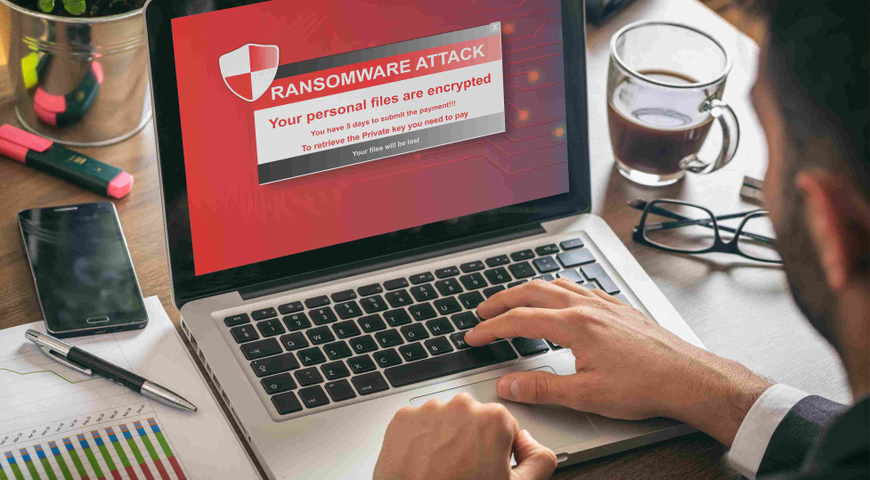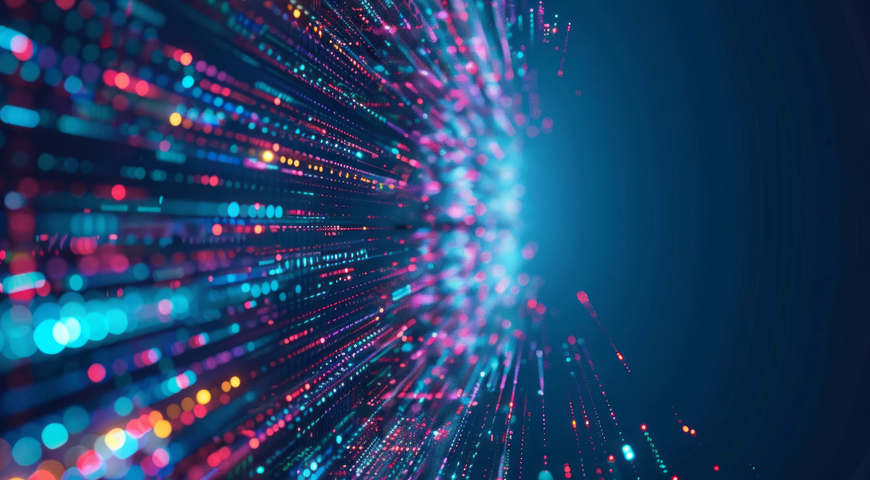
Antivirus software has been around for many years. In fact, the first antivirus software dates back to 1971, when a virus known as the Creeper infected and spread to PDP-10 mainframe computers manufactured by Digital Equipment Corporation (DEC). To combat the Creeper, an American computer programmer developed the Reaper. It was a program designed to delete the virus, but was, in fact, a virus itself.
Fast forward to 2023 and you are probably asking yourself "Do I need an antivirus software?"
This article describes what antivirus software does and whether you still need it today despite a number of security enhancements that have been made to PCs and Macs.
What is computer antivirus software?
Computer antivirus software is a specialized type of software that protects your machine from all varieties of malware, including viruses, trojans, worms, and adware. It gives home users a tool to level the playing field against cybercriminals who collectively release thousands of new viruses and types of malware each and every day.
Today, people interchange the terms “antivirus” with “anti-malware” and in essence, they are the same thing. Initially, the term “antivirus” was used because the initial infections were viruses, but as other malware surfaced — trojans, worms, adware, etc. — the term anti-malware was used as an all-encompassing term. Some anti-malware can use signature-based and behavior-based detection and some can even use artificial intelligence (AI). This is how the concept of “layers of protection” first surfaced.

How can malware harm your personal computer?
Computer malware is a type of software that can be self-spreading and, if successful, can wreak havoc on your computer and other computers in your home or business network. This is because some malware, such as a worm, is designed to reproduce and travel from computer to computer to cause as much damage as possible.
If the malware is not detected and successfully infects your PC or Mac, it can do extensive damage. While each virus may have different intentions, it can disrupt “business as usual” and adversely affect the use of your personal computer.
Understanding the Threat Landscape
Nowadays, using the internet has become part of our everyday activities, because we use it for different purposes. By doing so, we are exposed to a variety of cyber threats. Unfortunately, these cyberattacks are constantly increasing in number and becoming more and more dangerous day by day.
This means that the possibility of facing, such an attack is very likely. Whether it is malware, a virus, or an identity theft threat, they all can be devastating for your devices. This is why good antivirus software is needed in order to protect you from these attacks. Let's explore in detail what these cyber threats can do to your devices. Are you ready to dive deeper? Let's have a closer look.
- Computer issues: Symptoms can include issues with programs or files, system crashes, or even restricted access to critical files, data, and other programs.
- Exfiltrate data: In many cases, hackers look to steal sensitive information, such as passwords to confidential sites, credit card details, Social Security numbers, medical records, and more with the only reason of making money. Cybercriminals will exfiltrate data to delete it, use it for financial gain, or leverage the information to inflict harm, on an individual or business. These types of attacks have evolved drastically in the past years.
- Ransomware or trojans: Many cyberattacks are designed to trick a user into installing ransomware, trojan app ,and other software on their computer, and most users don't even understand that they have been tricked before it is too late. If ransomware is successfully installed on your computer, you will be asked to pay a ransom to get your data back. If a trojan is installed, it can steal your personally identifiable information (PII), banking data, logins, and passwords.
- Attempt to spread further: Worms are a specific type of malware designed to reproduce and spread to other devices over a network or through email. In fact, you can be liable if you are not protected and the infection spreads further and causes more damage.
- Slow the performance of the computer: Some malware is designed to reproduce so quickly, that it can consume a substantial amount of computer memory and significantly impact your computer's performance.
Why do you need antivirus software?
Today, we live in a world where the internet is an indivisible part of our lives. Every person is somehow related to the internet, whether it is to browse the news, watch videos, listen to music, read books, or share their photos on social media. Because of this fact and the expansion of the internet, cybercriminals have found this a gold mine for their criminal purposes, and the need for antivirus software has become a critical aspect of safeguarding our devices and personal information. The internet, while a vast and resourceful entity, also poses numerous cyber threats that can compromise the security of our digital lives.
Antivirus programs stand as the frontline defense against an array of cyber threats, each possessing the potential to wreak havoc on our systems and lead to serious damages, not only to hardware but also to people. These threats encompass a broad spectrum, from the notorious ransomware attacks to stealthy keyloggers breaking your password manager, browser hijackers, Trojan horses, worms, rootkits, spyware, adware, and insidious botnets. The diversity and sophistication of these threats underline the indispensable role, that antivirus software plays in our digital security. We can't be calm about our sensitive information, and the healthy environment for our computers and networks without the protection of a robust antivirus program provided by antivirus companies, which can not only save us money, but also a lot of headaches and help us stay safe in the battle with cybercriminals.
The security industry, recognizing the ever-growing complexity of cyber threats, has responded by developing advanced antivirus apps with the main goal of protecting you from the malicious purposes of cybercriminals. These antivirus programs are designed to detect, prevent, and eliminate malicious software that could compromise the integrity of our operating systems better than the basic built-in virus protection. As our reliance on digital platforms increases, so does the need for robust virus protection that extends beyond the built-in security features of our devices.
Potentially unwanted programs (PUPs) pose a subtle yet significant threat to our digital environments. Antivirus programs are equipped to identify and remove these intrusive entities, ensuring that our systems remain free from unwanted applications, that could compromise performance or privacy.
Ransomware protection stands out as a crucial aspect of antivirus software functionality. In a landscape where cybercriminals deploy increasingly sophisticated tactics, antivirus programs offer real-time scanning and heuristic analysis to detect and thwart ransomware attacks, even before they can encrypt our sensitive files. This proactive approach is essential in safeguarding against the potentially devastating consequences of ransomware.
Beyond the more blatant threats like ransomware, antivirus software addresses the subtler dangers of malicious behavior. Whether it's the covert activities of spyware, or the disruptive nature of adware, these programs constantly scan files and applications, working diligently to identify and neutralize any form of malicious code that might compromise the security of our sensitive information.
Operating systems, despite their built-in security features like Windows Defender and Microsoft Defender, are not impervious to the mean approaches of cyber threats. Antivirus software acts as an additional layer of defense, adapting to emerging dangers and providing users with comprehensive protection against an ever-evolving array of digital threats. The purpose of cybercriminals is to penetrate our security in order to compromise our personal computers and mobile devices, and gather sensitive information like personal and financial data, where the risks of identity theft are very serious. And if they succeed, they can use this against the owner for their criminal purposes and to accumulate financial benefits, but if you use antivirus software, the chance of falling victim to these criminals is minimal, almost zero.
The need for antivirus software arises from the intricate and diverse nature of cyber threats that persist in the digital realm. From ransomware attacks to the subtler nuances of spyware and adware, these programs play a pivotal role in fortifying our digital security. As we navigate the complexities of the internet, having reliable third-party antivirus software is not merely a precautionary measure, in fact, it is an essential component in the ongoing battle to preserve the security of our digital lives.
The conclusion here is that, if you want to be protected from all the mean cyberattacks that are stalking us every day, you should definitely give yourself peace of mind by using a trusted antivirus software provider. Because it does not matter if you are going to be a victim of these cybercriminals, the question is when you will face this problem. We all know the painful experience of being infected with a virus, or becoming a victim of identity theft. It is a very unpleasant feeling, so if you want to feel secure and protected, we definitely recommend starting to use a robust antivirus program.
Benefits of having third party antivirus software
The main purpose of the antivirus software isn't just to defend your Windows PC, Android phone devices, or iOS devices against security threats, viruses, and vulnerabilities, but also to provide you with real-time protection by executing automated scans. In order to prevent any known vulnerabilities from being evaluated as potential back doors for cybercriminals, Antivirus software provides you with the following benefits:
1. Protection against viruses and malware
The primary advantage of antivirus software is its ability to safeguard against viruses like malware and spyware. In today's reality, cyber threats often come in forms that can target system data, pilfer sensitive information, monitor system resources, and hinder overall performance simultaneously. As a result, it is crucial to have antivirus software running consistently.
2. Anti-spam and pop-ups protection
One of the methods through which viruses gain access to and infect a system is through pop-up ads and malicious websites filled with spam. Antivirus software plays a role in maintaining system security as it automatically blocks pop-ups and spam originating from websites.
3. Complete web protection
Antivirus software plays a crucial role in safeguarding individuals from scam websites that are designed to collect credit card and bank details without the user's knowledge. With its ability to block access to websites, a trustworthy antivirus program effectively prevents users from connecting to unauthorized networks. By doing so the antivirus apps give you full protection from these mean attacks.
4. Robust real-time protection
Another very important benefit of an antivirus program is that it functions as a shield that continuously examines every file and program on your system. Depending on the antivirus program configuration, when a contaminated file or program is identified, it is either deleted automatically, or placed in a folder for further examination. A quarantined file is isolated from the rest of the system and its programs to minimize further harm.
5. Boot-scan command
Advanced viruses have the ability to replicate themselves when the system is running. However, powerful antivirus software can stop a virus from spreading by initiating a boot command. This command shuts down the operating system (OS) and restarts the computer, thoroughly examine the hard drive for any presence of viruses or malware. While performing this scan, the virus is prevented from replicating as the OS becomes inactive.
6. Dark web protection
Data that is compromised in data breaches, such as attacks, is frequently exposed on the dark web. Numerous antivirus solutions exist to assist organizations in identifying whether their confidential information has been leaked on the dark web. For instance, if they come across an email address or account number associated with their data on the dark web, they can inform the user and update their password with a more robust one.
7. External devices protection
Many individuals often connect devices like drives and USB adapters to their computers. Antivirus programs scan all connected devices and peripherals to prevent viruses from infiltrating the personal computing system through their sources.
A reliable antivirus program should provide you with all these benefits in order to rest assured about the protection level of your devices.
Free vs Paid Antivirus
As we all know, there is no free lunch. If you are provided with something for free, it is commonly because it only provides the basics related to the paid version of every product. The situation here with the antivirus software is the same, when you choose to use a free version of antivirus software, it provides you with basic protection for your PC or mobile devices. It will protect you from common viruses, blocks dangerous files and apps, and warns you about suspicious websites.
On the other hand, by using paid antivirus software, you receive a high layer of protection with the latest technologies and upgrades, where the software updates and receives real-time data about new threats. In contrast, paid anti-virus solutions offer more than half comprehensive protection for your computer, for sure. It is able to prevent malicious and ransomware attacks, which are the most dangerous types of attacks nowadays, because they can lead to identity theft, damaging your devices, or even locking them and demanding that a ransom be paid in order to get you back access to your information.
Paid antivirus options offer enhanced control over your data. Provide increased security for sensitive online activities like banking. Moreover, paid solutions often come with features such as anti-spam, a personalized firewall, and parental control functionalities to ensure the safety of your children. Additionally, paid options typically offer the ability to store passwords securely and safeguard files, like photos and music.
Naturally, the advantages and specific features of paid antivirus software may differ depending on the brand. The better choice here is to go for a paid version in order to receive the best possible protection for your devices.
What to consider when choosing antivirus software?
Choosing the right antivirus protection software is essential for every person, but how do you select the right one among so many choices nowadays? What are the main benefits to look for when choosing antivirus protection? Which one will be the best option for me?
We all have the same questions in our heads when selecting robust antivirus software, because every person wants the best for his PC and mobile devices. It is absolutely normal to ask yourself these questions, when preparing to purchase antivirus software. In the following paragraphs, we will discuss the most important things to consider when you buy antivirus software in order to make the best choice for you.
1. High malware detection rate
When purchasing antivirus software, it's important to ensure that it has the capability of stopping 95 percent of all types of malware, whether they are commonly encountered or new zero-day attacks. Additionally, you want to make sure that the software doesn't have a rate of positives where legitimate files and reputable sites are mistakenly flagged as malware.
We recommend checking out reviews of antivirus software, because you will have the ability to see the positive and negative sides of this software, through other customer's reviews. On the other hand, there are labs that conduct tests on these products to determine their effectiveness in protecting your computer from malware. Take note that paid products tend to be more effective than the free ones as they have a lot more extra features.
2. Compatibility and Performance
When considering which antivirus software to purchase, it's important to take into account the hardware configuration of your computer and how it utilizes resources. If your computer has more than 4 GB of RAM, it's advisable to choose an antivirus program that operates efficiently on resource usage in order to prevent any potential slowdowns.
Additionally, make sure to assess your system configuration and ensure compatibility with the chosen antivirus software. Choose security software that provides a range of options in a timeframe and consistently updates its database.
3. Provided Features
Basic or free antivirus software has limited features. On the other hand, paid antivirus solutions offer advanced security tools, such as detection of phishing schemes, firewalls, password managers, and secure banking features. A trustworthy antivirus software will provide most of these features in its antivirus program, ensuring top-notch security at an affordable price. So what are the key features you should look for in an antivirus? Here are a few examples:
4. Spam filters
Spam filters are used to effectively filter out unwanted messages on your email platform. These are often built into premium security suites that will scan every single email in order to protect you.
5. Anti-Phishing Toolbars
We can definitely say that these toolbars provide another layer of defense against phishing frauds, especially if you are not using secure browsers.
6. Firewall
A firewall serves as a barrier, preventing programs from infiltrating your computer and accessing your data. A reliable firewall, and secure browser not only defend against outgoing threats, but also alert you when they detect any potential breaches.
This comprehensive solution safeguards your network and data by countering programs and online threats. Moreover, it ensures a browsing experience, allowing you to work and make transactions with confidence of being protected.
7. Performance/Reliability
Make sure the antivirus program you're considering is able to block viruses, adware, phishing attempts, and other threats.
8. Technical Support
When selecting antivirus software, it's crucial to take the reliability factor into account. If the security program you choose crashes or freezes, it could expose you to viruses. Therefore, ensure that the company provides support for any urgent situations. Effective customer support often includes options like chat, email ticketing systems, or phone assistance.
9. User friendliness
The ideal form of protection is the type that goes unnoticed, and individuals shouldn't have to be concerned about whether their antivirus software's functioning. If it hampers your work in any way, it's always preferable to choose a version that doesn't overly burden your computer's performance. Additionally, you can employ software to retrieve files that have been unintentionally deleted!
If you consider all these factors that we mentioned, be sure that you will choose one of the best antivirus programs on the market. If you find software that provides you with all these functions, you will know that it is the right choice.
Is computer antivirus software enough to protect my data and computer from different computer security threats?
The simple answer to this question is an unequivocal, No! Antivirus software is not enough to protect you from all malware infections. Why, you ask?
As we discussed at the beginning of this article, antivirus or anti-malware software is designed to protect you from many types of malware, but malware is typically a known infection. Anti-malware is not designed to detect and stop unknown malware infections or zero-day attacks. A zero-day attack happens when a cybercriminal successfully deploys malware that exploits a zero-day vulnerability—a never-seen-before security flaw or bug in a software application that the vendor is unaware of.
How can I detect and stop zero-day attacks?
To detect and stop zero-day attacks, you will need to use a cybersecurity solution that protects against cyber threats and cyberattacks, either known or unknown. Cybersecurity uses various technologies, processes, and practices to safeguard your data, systems, and applications.
Examples of some of the features that modern cybersecurity solutions provide include:
- Real-time protection to keep your computer safe from malicious activities, including never-seen-before threats.
- On-demand antivirus scan to ensure threats aren't lurking on your computer.
- Web filtering to block malicious URLs trying to infect your system with malware, ransomware, and cryptojackers the moment you try to visit them.
- Anti-ransomware and cryptojacking protection to safeguard your files, applications and systems by detecting and stopping ransomware and cryptojacking attacks.
- Signature-based analysis to keep your defenses current by checking for updates to the threat database.
- Behavior-based detection to detect threats based on suspicious or unusual user or application behavior.
- Vulnerability assessment to identify security weaknesses in your operating system (OS) and applications and recommend updates to keep you safe.
What to look for in a cyber protection solution?
Clearly, the most important factor to consider is how well — and how effective — the cybersecurity component of the software is at detecting known and unknown cyber threats.
To that end, consider solutions that provide the cybersecurity features described above plus the following capabilities:
- Full-image backups protect and recover everything, including the OS, applications, and data, and also enable you either to restore everything or only the files and folders you need
- Real-time protection to keep your device and backup files safe from malicious activities
- All-in-one recovery drive to easily restore your systems to the same or new hardware
- Dual protection to automatically replicate your local backup in your personal cloud to better follow the 3-2-1 backup rule: maintain three copies of your data across two types of media, with one backup stored off-site
- Backup version control enables you to keep as many versions of your backup as you want.
Let's face it. Cyberthreats aren't going anywhere any time soon. As they grow in number, they are also becoming much more sophisticated and their attacks harder to detect. This means we all need the best tools available at our disposal — including individuals using home computers. Cyber protection software can be a critically important tool to help us all stay a step ahead of the bad guys.
Acronis True Image: A Top Choice
If you want to be protected from the unexpected, you should definitely choose Acronis True Image. When we talk about complete protection for your PC and mobile devices, everyone of us would like to choose the best security and antivirus software for your devices, and Acronis True Image is the right choice to ensure robust protection for all of your devices.
You will be provided with the most reliable cyber protection software on the market, which is easy-to-use and is the best solution against data loss, viruses, cyberattacks, and even identity theft. You will benefit from the best antivirus and ransomware protection, which are reliable with time-proven technology and innovative approaches to responding to the threats that you may face on a daily basis.
With proven efficiency for fast backup and recovery, a full-system backup plan and strong antivirus software will give you peace of mind even when facing unexpected cyberattacks. Our software is easy-to-use with an intuitive user interface and fully automated protection.
Our real-time cyber protection will amaze you with its capabilities to detect and block every single malicious process. Also, you will be provided with the best ransomware detection and response, which is based on behavior analysis to prevent zero-day threats. Furthermore, automatic recovery of all files will be one click away to save your most valuable assets—your data—in case of emergency. Our active protection runs constantly in the background to protect your machines in real-time while you work as usual. Constant antivirus scans are running on-demand to perform in-depth searches for malicious software throughout the whole system. On the other hand, you will be protected from any vulnerabilities in your machines with vulnerability assessment, which is a daily scan that runs in the background that detects vulnerabilities in your system and apps and then assesses their severity.
Could it be better? Yes, in fact, because you will also be provided with solutions for managing detection issues, managing files in quarantine, and all that will be performed automatically.
You can't even dream of better active protection for every single file of yours. We can definitely say that Acronis Cyber Protection Home Office is the best option for you with its comprehensive malware protection, robust antivirus, and data backup and recovery options. By choosing our product, you will feel confident that you can browse online securely without any concerns about becoming a victim of the mean cybercriminals that are stalking us every day. If you want to choose the best cyber security for your PC, mobile devices, and business machines, you should definitely start using Acronis True Image. Believe me, you won't regret it for a second, because in case of an emergency, you will be fully protected from every single threat, we will cover you.
Upgrade Your Cyber Protection - Get Antivirus Today!
About Acronis
A Swiss company founded in Singapore in 2003, Acronis has 15 offices worldwide and employees in 50+ countries. Acronis Cyber Protect Cloud is available in 26 languages in 150 countries and is used by over 21,000 service providers to protect over 750,000 businesses.



